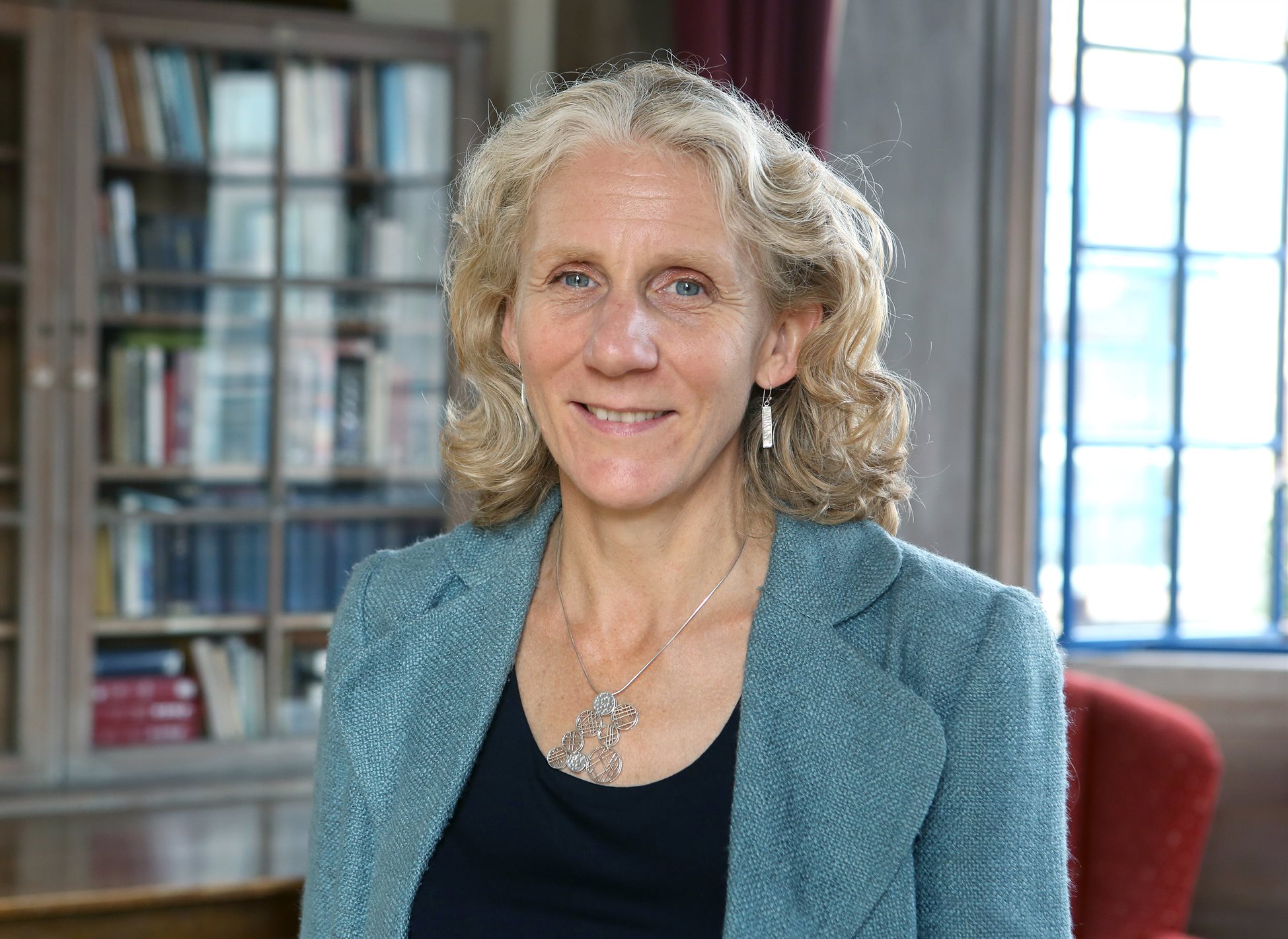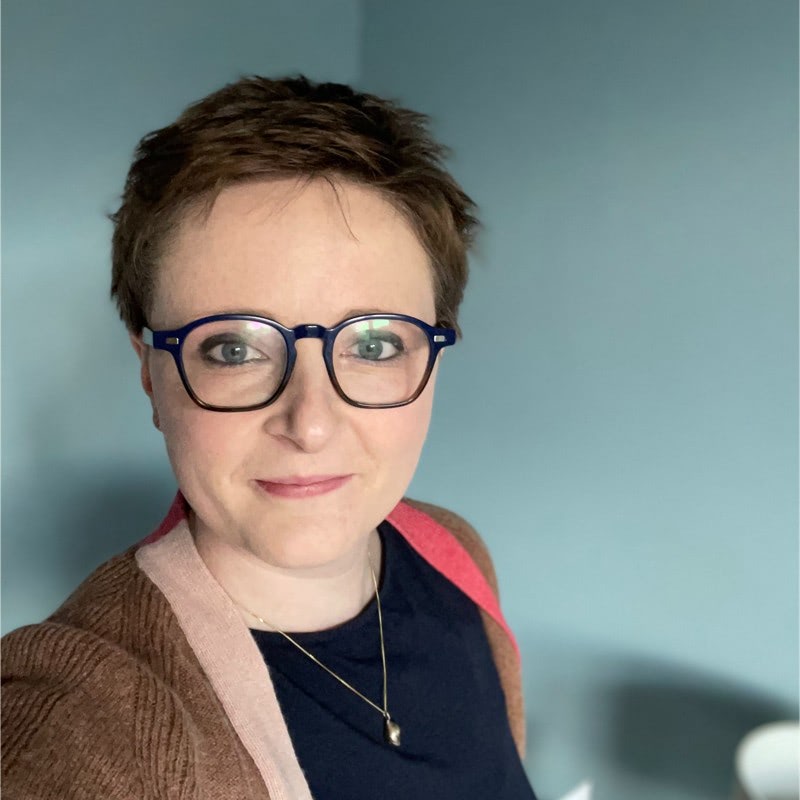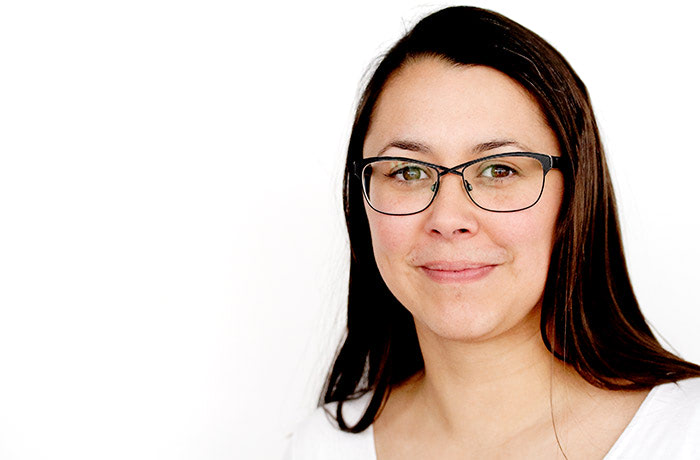Universities in the UK and globally are turning to Aspect to help commercialise SHAPE research

Arts, humanities and social sciences (SHAPE) have historically not been at the forefront of technology transfer, dominated as it is by the science, technology, engineering and mathematics (STEM) disciplines. A key reason for that reality is the patentability of inventions out of those departments, making a commercially successful route arguably more obvious.
But with SHAPE subjects making up a significant part of most universities’ schools, the approach is changing. One project looking to elevate the status of these fields of study is Aspect – an acronym for “A SHAPE Platform for Entrepreneurship, Commercialisation and Transformation” (the “s” in Aspect initially stood for social sciences but Aspect’s remit quickly expanded).
Prof Julia Black, strategic director of innovation and professor of law at London School of Economics and Political Science (LSE), chairs the Aspect consortium having helped originate the “rather mad idea”, she quipped, after a trip to Massachusetts Institute of Technology (MIT) and Stanford University that disproved her hypothesis that LSE was the only institution that had left SHAPE behind when it came to commercialisation. In fact, Black remembered, MIT and Stanford “were doing a lot but essentially nothing in social sciences”.
LSE joined forces with the universities of Cardiff, Glasgow, Manchester, Oxford, Sheffield and Sussex, as well as venture studio Zinc – founded by a visiting professor at LSE – and won a £5m ($6.5m) award from public body UK Research and Innovation (UKRI)’s Connecting Capability Fund.
Today, Aspect operates on a two-tier structure – the core group accountable for the public funding and an increasingly long list of associate members.

“We have different communities of practice to support those working on research commercialisation, on business engagements, on communications and on entrepreneurship. That functions from the bottom up, so members bid to run projects and programmes,” Black explained.
Aspect faced “a vast lacuna”, Black lamented. “There is not a wonderful, established landscape with a few holes here or there, which is what I thought it might be when I started. There are a few islands of activity with vast lakes in between and no connections between them.”
But, she insisted, “one of the exciting things about Aspect is the network and how to develop that. That is the connectivity between institutions and the individuals – the connectivity between those who are supporting researchers but also between researchers themselves.”
Sean Farran, head of marketing and communications at Aspect and global innovation lead at LSE, remarked: “The community element is a key one. We ran an online festival last year and one of the observations from an attendee that stood out to me was, ‘I have finally found my tribe’. They were coming from Australia, and what we are seeing more and more of now is talking to people across the world about Aspect that it aligns in some way with what it is they are working on.
“The other element is the opportunities that present themselves, both for the individuals and institutions, in having more visibility and mapping out the entrepreneurship ecosystem – seeing where the gaps are and how to fill them.
“Moving forward it is not only about what a community can do together but also how you can increase it, teach it to others and collaborate, how public and policy can come together and how different areas of innovation can collaborate.”
Black added: “The question is to what end are we doing this, because the connectivity cannot be an end. To me, the end lies in the ‘t’ in Aspect – transformation. There are a lot of academics who want to do good with their research and what is important is how they can go out and make an impact. A lot of that effort has been oriented towards policymakers, non-governmental organisations or other people, with academics doing it by adding in their ideas and insights. But there is only so much that policymakers can do. What we wanted to experiment with Aspect was: is there another way that you can mobilise your knowledge for public good and make it scalable, while developing it in such a way that the research becomes sustainable with an income or data stream? That requires using mechanisms of the private sector.”
And the private sector was undergoing a changing zeitgeist, Black pondered, citing the increasing importance of social enterprises, models such as B Corp and a drive towards environmental, social and governance principles. “We are doing this in a very changed environment than it would have been even five years ago. You can start conversations with academics, saying ‘it is not all evil’,” Black declared.
“For the SHAPE disciplines it is a messier route partly because of intellectual property that you cannot protect in the same way. You have to find different ways to mobilise and scale, which means academics have to start thinking about the business plan much earlier and the TTO manager needs to move much earlier,” she added.
Morven Fraser-Walther is the IP and innovation manager, and enterprise lead at University of Glasgow, as well as chair of the Research Commercialisation Community of Practice for Aspect. She said: “Social enterprise particularly in the university context can offer additional benefits that are interesting and different to researchers when we think about commercialisation of university-led research.
“Our ecosystem in Scotland is well-placed. We work very closely with Community Enterprise and other partners to integrate into the wider ecosystem that exists in Scotland around social enterprise.
“We have, importantly, funding opportunities in Scotland to be able to do this, and ways to internationalise through groups like The Challenges Group, for instance.”

She added: “This is not an unknown quantity, there is a greater push towards social enterprise as it offers an exciting route for universities to think about in terms of fulfilling some of our values, aims and objectives that are rooted in the place in which we live.”
One of the consortium’s projects to commercialise research is the Aspect Research Commercialisation (ARC) Accelerator, a first-of-its-kind initiative globally to provide entrepreneurial training, ideation, mentoring and practical support to help SHAPE researchers build ventures from their research.
“ARC is funded by the original Aspect bid, a follow-on bid through Research England and the Economic and Social Research Council,” explained Chris Fellingham, director of the accelerator and the social sciences and humanities lead at tech transfer office Oxford University Innovation.
The six-month programme was specifically aimed at research commercialisation, Fellingham stressed, with each researcher team following their own institutions IP and equity policy.
“We do not just want anyone’s plucky startup – there are other places for that,” Fellingham argued. As Aspect was free to join, universities could in theory become a member only to gain access to ARC, but the future model for Aspect and ARC was still a matter of discussion, he clarified. “Longer term, we are looking at financial sustainability for Aspect and there is a question mark as whether to it is a membership-funded organisation, which would cover the cost of ARC, or whether ARC seeks Research Council funding.
“My personal preference is the latter because ICURe is funded to the tune of £4m per year and ARC would be a fraction of that – it would also mean the Research Councils are covered for social sciences and humanities commercialisation. It seems like the logical thing to do, certainly to me, to get more value out of the research they are already funding.”
ARC did not take stakes in companies because that would not make sense, Fellingham argued. “One, every university has their own IP policy and that would be a mess. Two, there is no legal entity for Aspect to hold the equity. Three, if we held equity, someone would need to manage that equity and that would add to the cost. And four, it would make it harder for researchers and universities to engage with ARC.”
He added: “I do not think it would even work particularly well as a model because of the type of companies we work with – there are going to be fewer unicorns then you get in STEM, so an equity realisation model is less likely.”
The programme offered was evolving quickly, Fellingham said. “Initially, we divided it into three parts. The first part was one-on-one entrepreneurial training, not wildly different from that which you would get on most accelerators. Market validation is the centrepiece, similar to ICURe. Then there is a pitch at the end with pre-seed funding that we included as part of our grant because it is a little harder for some of these projects to source funding.
“We pivoted in two key ways. One, we now link them with mentors very early on, and the mentors are responsible for dealing with the market validation and value proposition. In the first iteration, we were almost pretending that these were tech startups that are going to get investment and build digital products. When you pull accelerator training off the shelf, that is what you get. But they are not tech startups.”

Mentors were a key part in trying to make the experience more bespoke, Fellingham added, and “giving SHAPE researchers one-to-one support as well as helping them on the entrepreneurial journey, which is harder for them because they are not as socialised to the idea that they could be entrepreneurs”.
He continued: “I appreciate a lot of scientists are not either, but if you go to some very active parts, like medical science at Oxford, even if they do not want to be an entrepreneur, they know colleagues who are intent on doing it. It is not a crazy concept.”
The other part that was changed, Fellingham elaborated, was the move to a multimodal model where “maybe a third will be a startup with a digital product”.
“One third will be a service provider, like a consultancy,” he said. “For example, Prof Roberta Guerrina at University of Bristol helps large companies with equality and diversity initiatives. How do you do it as a large company? How do you embed it? How do the stakeholders work? Which policies work? There is no product she can use, it is her going in, working with them and helping them implement it. Over time, she will build that as a consultancy. That is not a tech company, she cannot go to a VC.
“We needed people who knew how to build a consultancy, and instead of building a product where you try to find the market fit and scale it, it is more like a sniper bullet where you tailor your offering to exactly what the client needs. Slowly, you can standardise it and scale it, but it is a different pathway.”
The third change was slightly different, he said. “About half of them are social ventures, so we wanted to provide more support around that. What kind of financing might you access? It is obviously going to be more impact investment or debt financing, so again, different from the VC model that most accelerators guide you towards.”
Fellingham, who described his personal philosophy as trying to “do public policy outside of government”, added that a distinct advantage of commercialising SHAPE research was that, generally, capital requirements were much lower.
“A consultancy really does not need much to start,” he deliberated. “In theory, you can incorporate and go off to your first client. That is a big advantage. If you are a life sciences business, there is no way to start without capital.”
Beyond the low capital requirements, there were also significantly fewer to no regulatory hurdles, he added.
“In terms of them as entrepreneurs, there are pros and cons,” he considered. “Some of them are stronger, socially, at communicating their work probably because a lot of the work that comes to us has already had an external partner and that is where they got the idea. That may be easier compared to a scientist who creates something in a lab and then that transitions harder.
“But there is more resistance to commercialisation in the SHAPE subjects. There is a sense among some that it is selling out or that it is inappropriate for publicly funded research to have any kind of commercial value. That can make it harder.”
Black mused that people would often ask her why SHAPE research was not being commercialised. “It is, but it is done by Bain, McKinsey, KPMG, Deloitte, law firms and so on,” she argued. “You need to find ways to figure out what is scalable – such as measurement, data-driven methodology, tool kits – and the academic can then get income from someone using their tool but also access the data to understand how it is used, which means it feeds back into the research.
“It is a different business model, much more bespoke. In STEM, the tech transfer office has a patent and then they have two choices – it is a spinout or a licence, and both are well-trodden paths.
“Success also looks different and that is the next nut we have to crack. It might not be return-on-investment and it will not be 20 years of work paying off with a blockbuster deal. Even income or investment metrics will probably not be the same. It will be impact on society, but we need to devise acceptable metrics for this.
“We are working in the right space now though because the rest of the private sector is trying to capture social impact metrics. There are more than 600 standards for ESG investing, so we are not short. It is shifting the understanding of the nature of capitalism.”
Fraser-Walther agreed that there was often not the same socialisation of commercialisation but noted that Aspect and ARC had improved matters. She recalled: “When we first went out and asked our academic community if they wanted to talk to us, I was new in post and did not know what would happen. They could have all said no. We did not think that was going to happen, but it was a risk.
“Now that we are a couple of years in and we are looking for opportunities, they are more mature. There is a greater socialisation of that word ‘commercialisation’ – it is not a useful word, but it has some currency – and there is a greater understanding of what that could look like.”
She noted that she did not like setting up SHAPE and STEM in opposition as many of the challenges remained the same for both areas, she argued.
“At Glasgow, I focus on the SHAPE disciplines but I have projects in the STEM disciplines. The challenges around innovation are around finding time for academics. They are around doing something that nobody’s done before – putting that out into the world is and will remain challenging. We should not see this as being able to get over that barrier because I do not really see that as a barrier. It is a feature not a bug.”
She continued: “If I look at the ARC accelerator cohorts and their destinations, many of them are social enterprises or potentially consultancies. Often, they have links with local authorities or national government. All of this is more atypical of a way that you might have previously carried out commercialisation within a university context, but that does not mean that STEM could not or do not do those things. It is just that we may not have done them before.
“There is a lot to learn from both sets of disciplines in terms of where both can go and where both could go together. Interdisciplinarity is something that is an essential rather than an extra.”
She would be delighted if more Scottish universities would join Aspect, she added. Asked how she would try and convince her peers, she summarised: “Aspect to me is the opportunity to pilot things, to try things, to experiment, to iterate. It is a grand experiment made up of smaller experiments where we can see and test in real time how we develop business engagement, student enterprise, commercialisation for arts, humanities and social sciences. We can see all the different facets of that ecosystem and how we might interact.
“Secondly, Aspect is a way for us to have a collective voice for the SHAPE disciplines in terms of commercialisation. Personally, I have learned a huge amount from speaking to colleagues in other institutions, from being able to call on other institutions and ask about things I do not understand. It is a way for us to be able to interact, to try things, to collaborate in that very social science way of co-creation and advance the field.”
Queensland University of Technology was the first to show interest in Aspect’s work, and Fellingham noted that through talks he had given in continental Europe, he had identified a keen interest in SHAPE commercialisation there too.
“It could easily expand significantly,” he speculated. “There is a lot of interest in the Benelux countries. It occurs to me that in those countries, and to a lesser extent in Germany and the Czech Republic, there is a different understanding of the role of the university and this idea that they should be more engaged with the economy and society. My sense is there is not the same tension if researchers want to do something commercial.
“I will add, too, that Canada, Australia and New Zealand are hotspot areas. University culture is different there. I used to work at FutureLearn and those universities do not have the same highly traditional view that some countries do of the role of the university in society and they are more entrepreneurial as university entities.”
Meanwhile, Black and Farran had been in touch with peers in Norway who were interested in joining. Black said: “Working between STEM and SHAPE comes more naturally to them because their research funding and structures are much more interdisciplinary than ours.”
Interest had been growing in the US, too, Black added. After a presentation at AUTM’s conference, there was now a special interest group focused on social sciences commercialisation.
“I am really encouraged by going international. We know the UK context and there is so much more that we can learn,” Black said. “No one university has a whole host of academics who are doing this and they are not necessarily going to find their tribe within their home institution. By providing a network you have many more opportunities to meet like-minded people from whom you can spark new ideas.”
Farran added: “It is also interesting to consider how this will shape identity. Talking to international parties, it is about people becoming aware that this is what they are doing. The UK is helping to forge that identity on a global scale.”
Looking ahead, Fraser-Walther pondered: “I hope Aspect continues to experiment. I hope that it continues to pilot things that we do not know if they are going to work. I find that exciting. You often have a feeling or data that suggests something might work, but that is different to whether it does or not.
“I hope it retains that experimental, innovative core. I hope that what we will have done is to demonstrate internally at our own institutions and externally the power and contribution that the SHAPE disciplines bring through economy, through people, through society.
“And I hope that we can show that impact in a much more targeted way around what it is that we bring to the table.”
Fellingham hoped in a five or 10 years’ time, Aspect would have a few “big hits”. “There are really obvious areas where SHAPE commercialisation has already had a big impact,” he argued. ”For example, climate change, education, finance and health and social care are some of the big things, as well as potentially analytics services for businesses.”
Edtech, he said, already had delivered good examples, such as OxEd – which did not go through ARC as it was spun out earlier. The company assessed the language ability of children aged five to eight, and it secured funding during the pandemic to help identify pupils who were at danger of falling behind and helping them catch up.
“For me, that was a really fantastic story of a social science startup actively contributing to the pandemic response,” Fellingham noted. “Obviously, Oxford’s big stories were around the vaccine and the recovery trial – perfectly correct – but the fact that other systems like education were at risk and we had a startup that was helping correct that is an enormous story.”
He cautioned: “What I do not want are these patronising responses that you sometimes get along the lines of ‘oh yeah, social science is important, it helps you think differently’. These are organisations which can have a large impact and sometimes deliver big profits. The sector will be more varied, but we need a few big hitters to change the perception and realise the value.”
There is one major institution in England still missing from Aspect’s membership list: University of Cambridge. Emma Salgard Cunha, commercialisation manager for arts, humanities and social sciences at tech transfer office Cambridge Enterprise, said: “We are watching Aspect with interest. I really admire Aspect. It has been, amongst the Connecting Capability Fund projects, an example of genuinely innovative collaboration with a lot of different facets and great people involved.”

Cunha ascribed Cambridge’s decision to remain outside of Aspect for now to the fact that when the collaboration launched, Cambridge was already active in the area and so, “especially the business development work that Aspect did in the first year and the concentration around thinking about interactions between researchers and existing entrepreneurs or spinouts or startups, we had already done”.
Indeed, Cambridge Enterprise had been looking at SHAPE since 2018, she explained. “Our greatest area of engagement has historically been in academic consultancy services. When we initiated our project to explore arts, humanities and social science commercialisation more widely, we had great traction with academics in the schools of humanities and social sciences and we were hoping to build on that to bring engagement into other areas of commercialisation support.
Cambridge Enterprise aimed to engage with researchers and expose them to “the whole breadth of what commercialisation looks like”, Cunha continued. “That approach has borne good fruit and we now have plenty of active commercialisation projects representing disciplines across the whole of the organisation.”
Cambridge Enterprise had, under Cunha’s leadership, relied on a matrix team for its SHAPE project, pulling in expertise from across its technology transfer, consultancy and research tools units, but was now recruiting two dedicated staff.
Cunha, like Fraser-Walther, cautioned against seeing STEM and SHAPE disciplines in opposition. She explained: “We should not think of software as being technical and the arts and social sciences as happening separately. Software and data are core to social science research and for its dissemination.
STEM crossovers were not only found in software. “We have researchers working on new materials and designs based on new materials. There are overlaps between engineering, civil engineering, systems thinking, design and the social sciences and the arts.”
There was a danger social scientists involved in collaborations could be sidelined, Cunha observed. “It is almost like their expertise is not fully recognised and they are considered as the brand or communications person who is bringing a shiny wrapper for the technology. That is not what is happening. The insight that the social scientist or the arts and humanities researcher brings is often the crucial enabler and the technology is then built to their specification. We cannot remove the social scientist just because the technology exists.”
She stressed that tech transfer practitioners needed to recognise this danger and work proactively.
Externally, a lot of building blocks for progress were in place, Cunha said. “The engagement from the Economic and Social Research Council has been exemplary. We need a sustained push from research and innovation funders to recognise the value of commercialisation beyond the pound signs and to equip universities to be able to work with SHAPE researchers.
“It is often through a translational research project or an innovation-focussed call from the Research Councils that our researchers are realising the possibility of finding real-world beneficiaries for their work and trying to push research outside of the university for public good.”
Despite these building blocks and support internally at Cambridge, she said, “in the wider technology transfer community there probably is still a mindset around protectable, registrable IP first, and application and impact later.”
She continued: “We have to learn to recognise the value that comes not in the form of patents and support our researchers to recognise the value of their work too. Nor do those of us working with arts, humanities and social science have to feel like we have to replicate STEM commercialisation. We can be flexible, we can think with the researchers, we can help them to find new mechanisms for impact.”
STEM commercialisation practitioners offered a wealth of expertise to their peers focused on SHAPE, but it was a two-way street, Cunha noted.
“Certainly, we will develop best practices in the arts, humanities and social sciences, which will change STEM commercialisation. That is inevitable and a good thing.”

Cambridge, too, had delivered interesting examples of spinouts, Cunha said. One was Versed AI, a spinout out of the Faculty of Modern and Medieval Languages and Linguistics and the Institute for Manufacturing in the Department of Engineering. The company maps supply chains in real time to identify risks – be that understanding second-tier suppliers and the interdependence of nodes within a manufacturing supply network, geopolitical risks, or risks of modern slavery.
Another, “completely different”, example was Shaping Horizons, Cunha noted. The spinout emerged out of the Centre for Latin America Studies, having initially been funded as a research project by the UKRI’s Global Challenges Fund. “The research project set up incubation programmes and developed training and resources for hundreds of young people between Latin America and the UK, so that they could engage in creating new projects which addressed sustainability issues in their environments. The spinout is a social enterprise,” Cunha said. “What is cool about Shaping Horizons is that it provides training and mentoring for young people, and it also provides training for the mentors. Indeed, it is now starting to spin out its own social enterprises, because what happens when you get engaged innovative young people together to deal with sustainability problems, they come up with great ideas. They have not yet needed investment from us, but we hope that time comes soon. They incorporated in August 2021.”
Cunha concluded: “Social science companies have a good understanding of the problem that they are trying to solve. They are not in the position of having invented something and now trying to find the application. Their specialism is absolutely in understanding where the problem sits; they understand the system very well.
“For us, commercialisation does not necessarily mean that it needs to make huge amounts of money. Of course, sometimes making money is a good proxy for the level of impact that something is making, but it is not always the case.”









